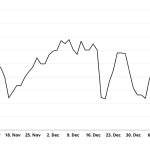What Is Intellectual Property in Terms of a Capital Asset?
Some types of intellectual property are considered capital assets and may be recorded on a company’s balance sheet as intangible assets. Intellectual property is a fairly broad term and can take many different forms. Examples of intellectual property include patents, trademarks, copyrights, trade secrets, or unique ideas. While some of these assets are recorded on a company’s balance sheet, the true market value of this type of property is often difficult to determine.
Key Takeaways:
- Some types of intellectual property, such as patents, copyrights, industry knowledge, and trade secrets are considered capital assets and may be recorded on a company’s balance sheet.
- Because such assets are often intangible, their market value is often difficult to determine.
- Some intangible assets are protected legally and granted intellectual property protection rights.
Understanding Intellectual Property
A capital asset is typically a significant piece of property such as a house, a car, or an investment in the form of stocks, bonds, and even collectibles. These assets are all physical, or tangible, which makes them relatively easy to value. Intellectual property that is considered a capital asset can include human capital, know-how, and industry knowledge, which is intangible and difficult to value as an asset.
Warehouses and factories are increasingly replaced by digital solutions as companies rapidly advance in technological capability. Thus, innovative ideas and R&D investment are a growing source of income for companies worldwide. The race for ideas and the pursuit of knowledge for creativity are emphasizing the increasing role of intangible assets and the need to quantify them.
Some intangible assets are protected legally where they meet the criteria for intellectual property protection and rights. Intellectual property rights are often granted for innovative products and processes (through patents); cultural, literary, or data software works (copyrights); designs, trademarks, microchips, and trade secrets.
Accounting for Intellectual Property in Financial Statements
Accounting principles require that intangible assets be recorded in financial statements at cost or less. Internally developed intellectual property such as trade secrets or ideas most likely are not recorded on the balance sheet because they have no directly associated costs or clear value.
Patents, trademarks, and copyrights generally have associated costs and are capitalized as assets on the balance sheet. These must be amortized over the useful life of the asset. When intellectual property is purchased from another business, it is recorded on the balance sheet at cost and amortized over the remaining useful life of the asset.
Accounting standards require that intellectual property be recorded separately on the balance sheet from goodwill, which is another type of intangible asset.
Valuing Intellectual Property
Since accounting standards dictate that cost or less be used to record intellectual property in a company’s financial statements, a realistic market price for certain forms of intellectual property is hard to determine. Often, an industry expert must perform an in-depth valuation study to determine a reasonable market price for intellectual property when one company is considering buying this type of property from another.
Read the original article on Investopedia.

